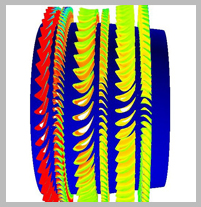| |
software development
|
 |
|
|
| |
|
|
|
| |
|
| |
APSI is a minority and veteran owned service company that provides analysis/design, scientific software development, test engineering and facilities operations/maintenance, information technologies as well as IPC standards certification. APSI was incorporated on March 27, 1998 as a small disadvantaged business and received Small Business Administration 8(a) certification on November 30, 1998.
|
| read more ... |
|
|
|
|
You are probably aware of how computer technology is continually advancing, allowing us, in our every day lives, to communicate and accomplish tasks more quickly and efficiently than ever before. But are you aware of how NASA is leading the way in developing computer technology and software tools which allow U.S. Aircraft Engine Companies to design new aircraft engines which are more efficient in less time and for less money? NASA researchers are working to accelerate the development, application, and transfer of high-performance computing technologies to meet the engineering of the U.S. aeronautics industry, and to accelerate the implementation of a National Information Infrastructure through their work on the High Performance Computing and Communications (HPCC) Project .
|

6-Stage Turbine Numerical Simulation |
|
APNASA, the Average Passage Code, is a multi-stage turbomachinery computer code which uses a parallel computer system and run on the Unix platform and can be run on a PC running Linux. AP Solutions, Inc. is the only authorized distributor of APNASA and is authorized to customize APNASA for commercial customers. The beauty of APNASA is that it offers both detailed flow physics and high computational speed. When performing CFD analysis of multi-stage turbomachinery the engineers have had to decide between using direct numerical simulation which provides very accurate and detailed information about the flow physics but the code may need to run for months in order to get the analysis. On the other end of the spectrum is axi-symmetric equations which will yield results very quickly but will not yield much information regarding the internal flow physics of the turbomachinery being analyzed.
|
|
NASA currently has a collaborative arrangement with General Electric to use the APNASA code to perform an analysis of the GE90 turbofan. The goal is to perform an analysis of the primary flowpath of the engine, at the design point operating conditions in less than 24 hours of central processing unit (CPU) time on a parallel computer system. The primary flowpath of the GE90 turbofan consists of a nacelle and inlet, many blade rows of turbomachinery (the fan and compressor), a combustor and an exhaust nozzle.
|
|












